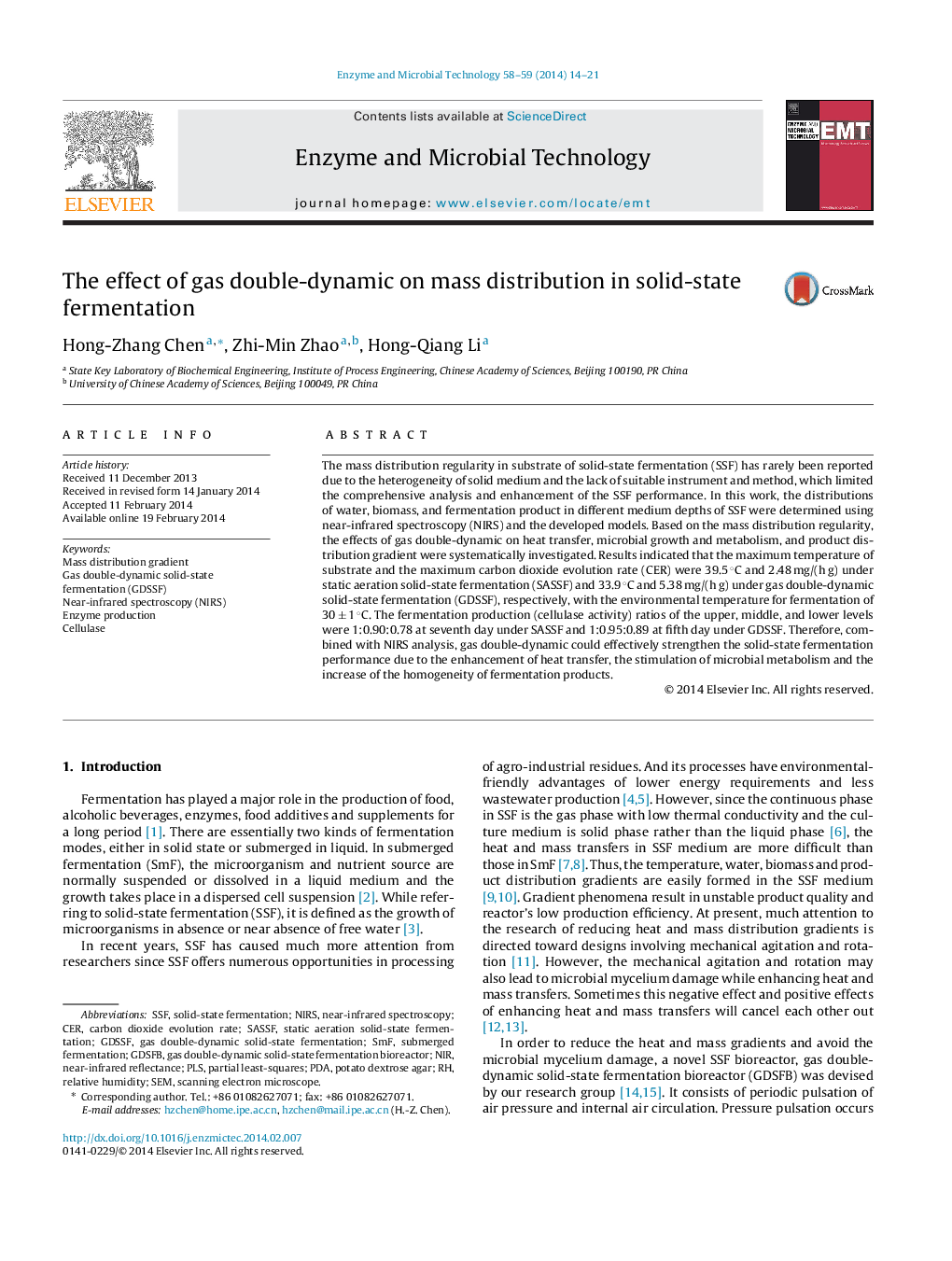| Article ID | Journal | Published Year | Pages | File Type |
|---|---|---|---|---|
| 17200 | Enzyme and Microbial Technology | 2014 | 8 Pages |
•Mass distribution in solid-state medium was quantitatively determined using NIRS.•The mass distribution regularity revealed mechanism of GDSSF.•Periodic pressure pulsation stimulated microbe to metabolize synchronously.•GDSSF improved cellulase production.
The mass distribution regularity in substrate of solid-state fermentation (SSF) has rarely been reported due to the heterogeneity of solid medium and the lack of suitable instrument and method, which limited the comprehensive analysis and enhancement of the SSF performance. In this work, the distributions of water, biomass, and fermentation product in different medium depths of SSF were determined using near-infrared spectroscopy (NIRS) and the developed models. Based on the mass distribution regularity, the effects of gas double-dynamic on heat transfer, microbial growth and metabolism, and product distribution gradient were systematically investigated. Results indicated that the maximum temperature of substrate and the maximum carbon dioxide evolution rate (CER) were 39.5 °C and 2.48 mg/(h g) under static aeration solid-state fermentation (SASSF) and 33.9 °C and 5.38 mg/(h g) under gas double-dynamic solid-state fermentation (GDSSF), respectively, with the environmental temperature for fermentation of 30 ± 1 °C. The fermentation production (cellulase activity) ratios of the upper, middle, and lower levels were 1:0.90:0.78 at seventh day under SASSF and 1:0.95:0.89 at fifth day under GDSSF. Therefore, combined with NIRS analysis, gas double-dynamic could effectively strengthen the solid-state fermentation performance due to the enhancement of heat transfer, the stimulation of microbial metabolism and the increase of the homogeneity of fermentation products.
